Hello users, welcome to our new article. In the last article, I have discussed the water tube boiler in detail. But here I will explain the Definition, Types, Advantages, Disadvantages, and application of the Fire-tube boiler.
Note: At the bottom of the article you can download the whole article in PDF format.
Fire Tube Boiler Definition:
Fire Tube Boiler is the type of boiler in which the water is flowing outside (Surrounded) the tube and hot gases which are produced by the combustion chamber are inside the tube and the further boiler is used to rotate the turbine blade and that used for the generation of electricity.
After knowing the definition now move to types of fire tube boilers.
Fire Tube Boiler Types:
The different types of fire tube boilers are as follows:
- Cochran Boiler
- Cornish Boiler
- Locomotive Boiler
- Velcon Boiler
- Simple Vertical and
- Scotch Marine Boiler.
Now we are going to study in brief all the types of Fire boilers.
1. Cochran Boiler:
Cochran Boiler is a modification of a simple vertical boiler and a Portable type boiler. Coal or Oil is used here to produce the hot flue gasses. The steam generated from the Cochran boiler is used in Hydro Power Plant and some small industries too.
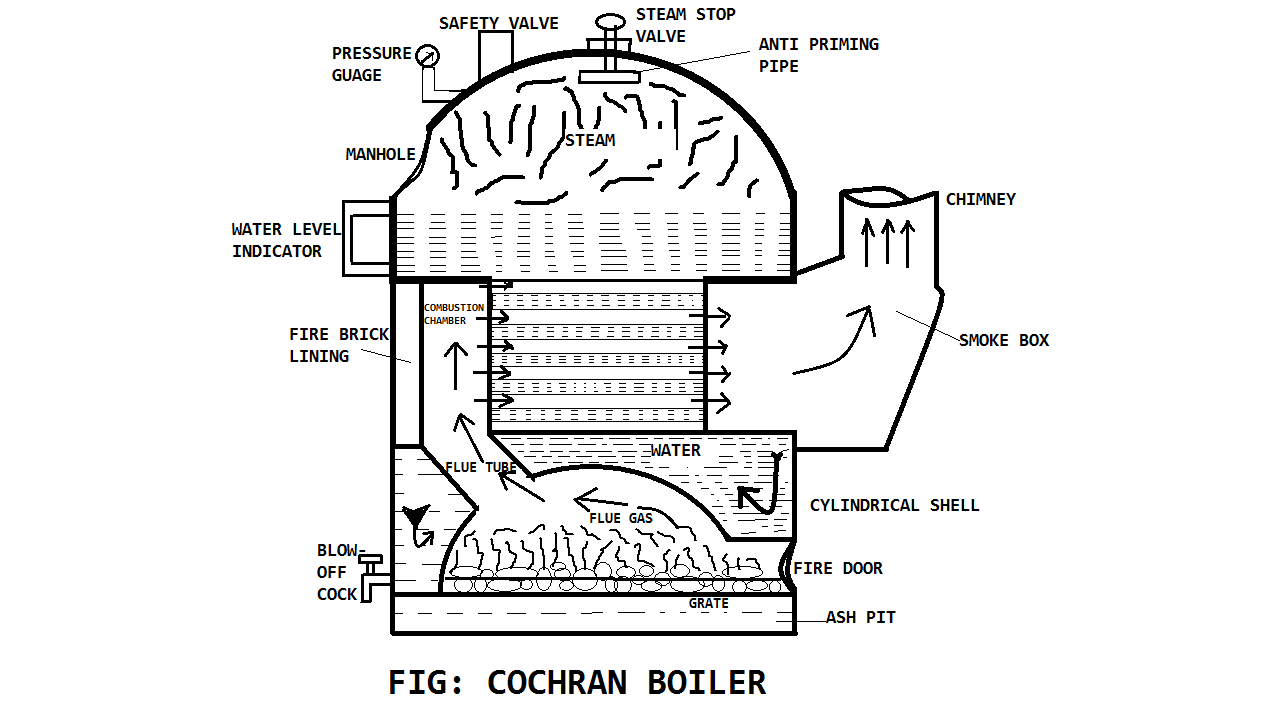
2. Cornish Boiler:
Cornish Boiler is developed by Richard Trevithick and, was first installed in 1812 at Dolcoath mine. Cornish boiler has a long horizontal cylinder and a single large flue containing the fire.
Approximately It generates steam at the rate of 6500 kg/hr. The maximum steam pressure is about 11-12 bar. The main advantage of this boiler is that it is portable.
Coming to the construction side this boiler shell is 1.2 to 1.8 meters in diameter and length of the shell is 4 to 7 meter. the diameter of the flue tube is approximately 0.6 times the shell diameter.
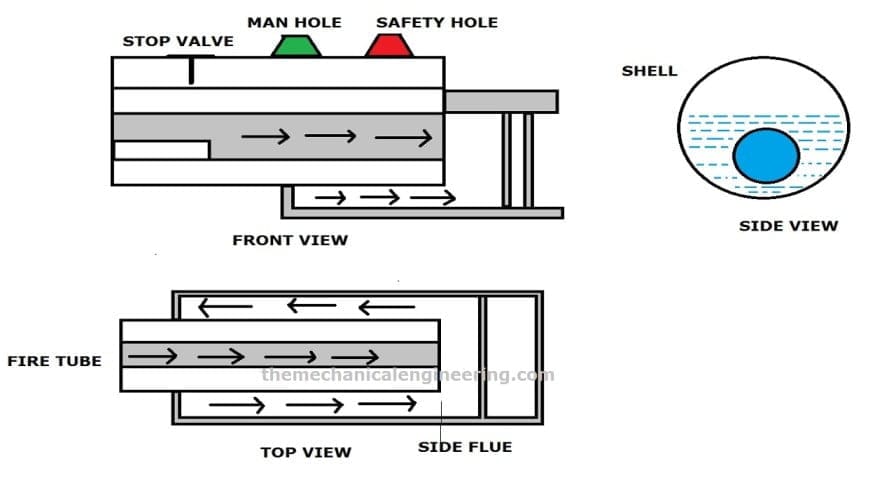
3. Locomotive Boiler:
This boiler was part of the Locomotive engine in which the steam was used to run the engine vehicle but now this system is powered by fuel which is diesel or electricity. In the early 19’s, this locomotive boiler was developed to overcome the railway problem.
The railway engine used a locomotive boiler till the 20th century but now it shifted to fuel and then electricity.
A locomotive Boiler is an external fire boiler. It has a large fire space, horizontal drum axis, and is a multi-tube boiler. It is also a portable type of Boiler.
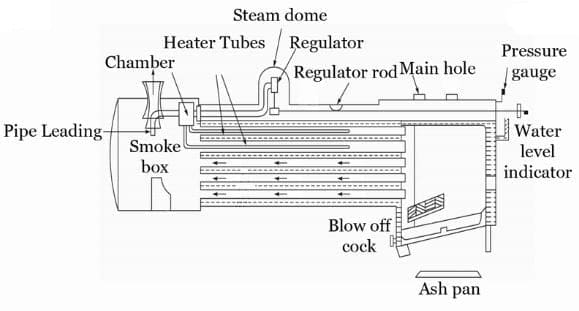
4. Simple Vertica Boiler:
As the name itself indicates vertical boiler so the boiler is not in a stationary position, unlike other boilers. The boiler working at a low pressure therefore the steam production rate is also low.
A simple vertical boiler occupies low space as you can see in the diagram compared to other boilers.
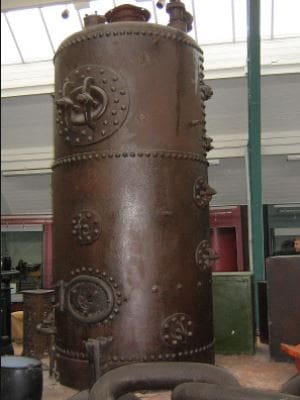
5. Scotch Marine Boiler:
This boiler is used for ship or marine work. The construction of this boiler is developed based on 3 parameters:
- The generation of steam can be done from any water (Water is no dirt).
- The boiler size: kept small.
- And Overall efficiency should be more.
In the boiler, tubes is having flue gases and water surrounds them which gets heated and then is converted into steam.
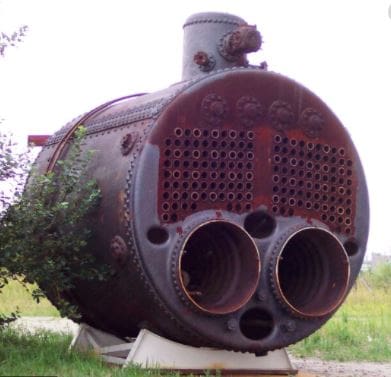
Fire Tube Boiler Advantages:
The following advantages of fire boiler are:
- The Fire-tube boiler is in a simple design.
- It is cheaper than the water tube boiler.
- The maintenance cost is low.
- Cost-effective heating solutions.
- The procedure for cleaning is very simple.
- To operate a fired boiler, no need for skilled operators. Semi-skilled operators can operate.
- A Fire boiler can be used in small industries.
- Feedwater treatment is not very essential.
Fire Tube Boiler Disadvantages:
The following disadvantages of fire tube boiler are:
- The fluctuation of load cannot be easily handled.
- The rate of steam generation is low.
- A Fire boiler is used in small power plants.
- The maximum working pressure is up to 20 bar which is a less comparatively water tube boiler.
- Overall efficiency is up to 75% only.
Fire Tube Boiler Application:
The main application of Fire Tube Boilers is that it is used in marines, railways, and industrial sectors.
Related Articles:
Babcock and Wilcox Boiler
Cochran Boiler
Lamont Boiler
Locomotive Boiler
I have also written an article on the water tube boiler in detail. You can check that too. Now if you have any doubt feel free to comment. If this article helps you then do not forget to share on social media.
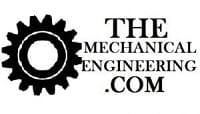


![Different Types of Measuring Tools and their Uses [Notes & PDF] Feature Image of Types of Measuring Tools](https://themechanicalengineering.com/wp-content/uploads/2023/01/Feature-Image-of-Types-of-Measuring-Tools-300x171.jpg)
![Steel: Properties, Different Types and Applications [Notes & PDF] Feature Image of Steel](https://themechanicalengineering.com/wp-content/uploads/2023/01/Feature-Image-of-Steel-300x168.jpg)
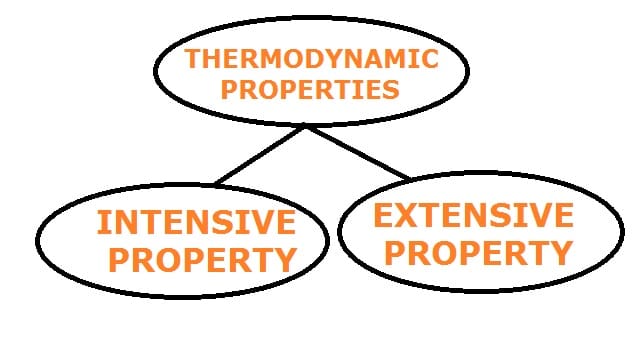
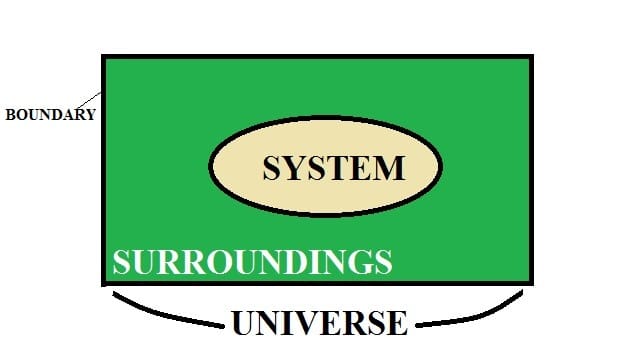
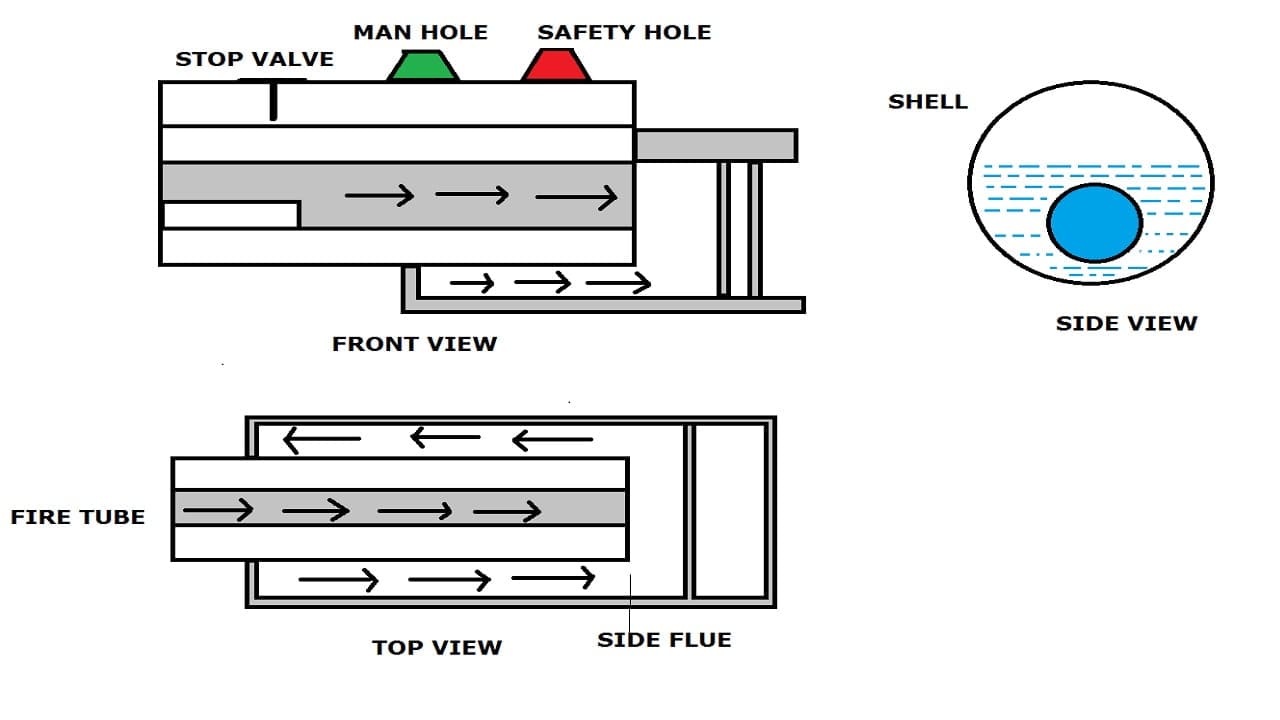
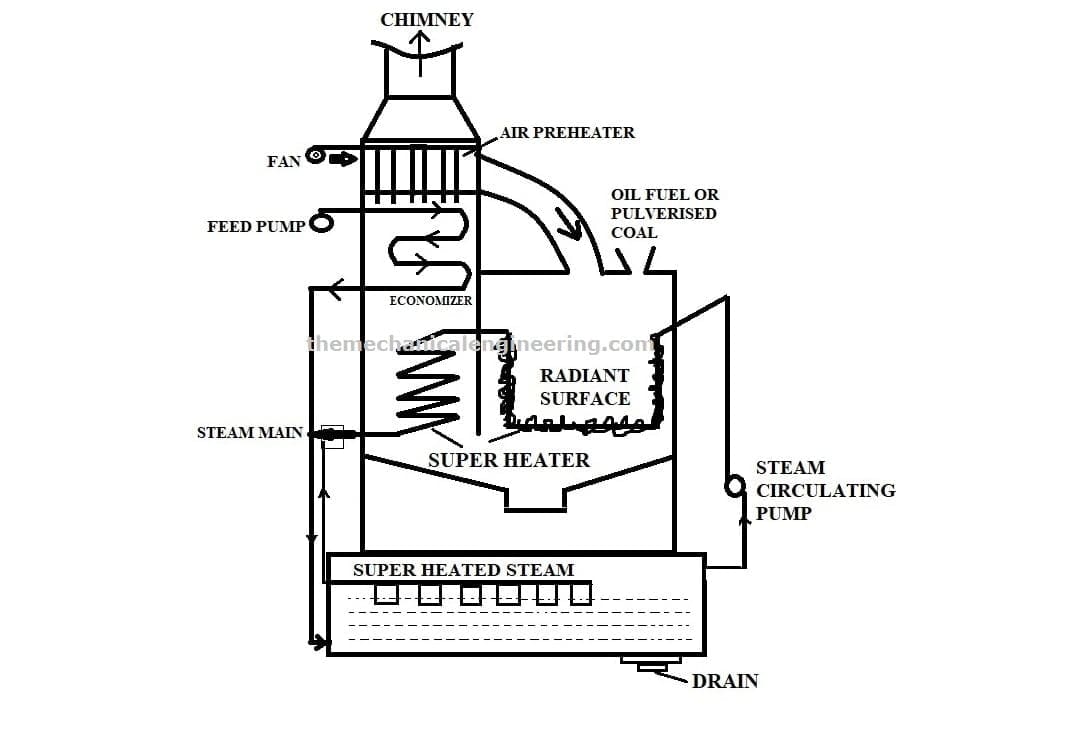
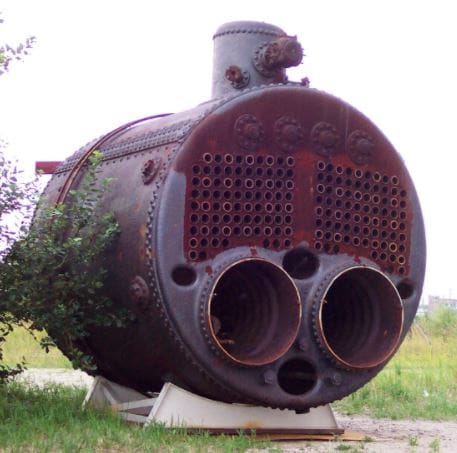
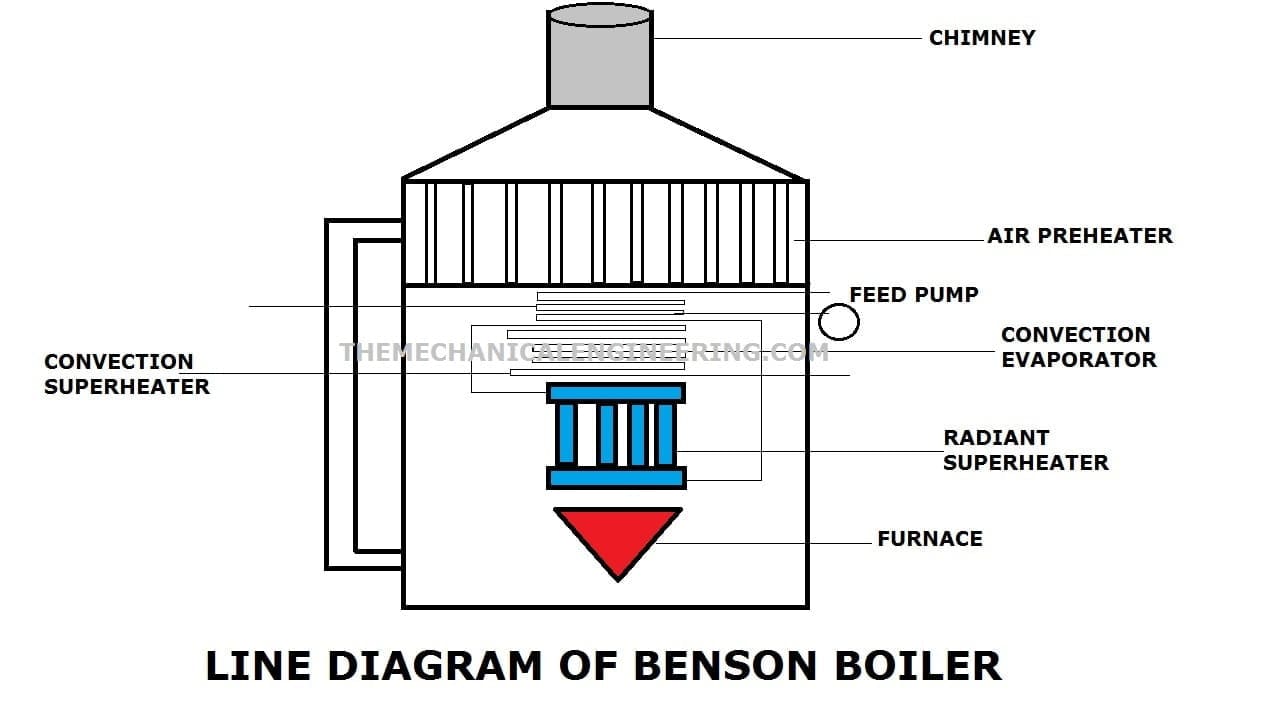
Discussion about this post